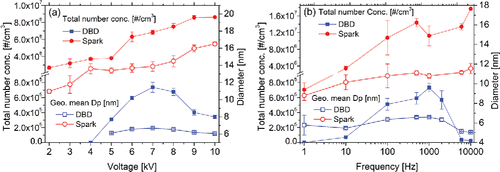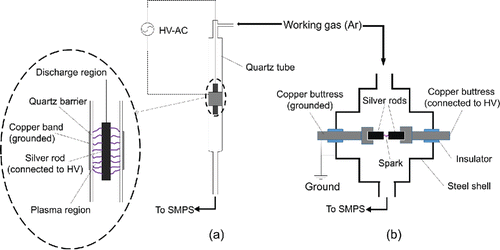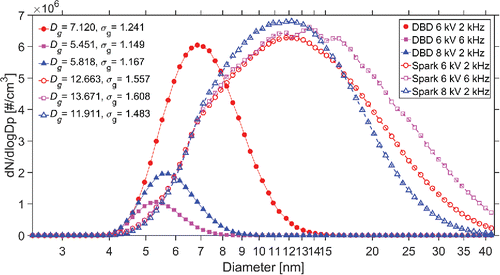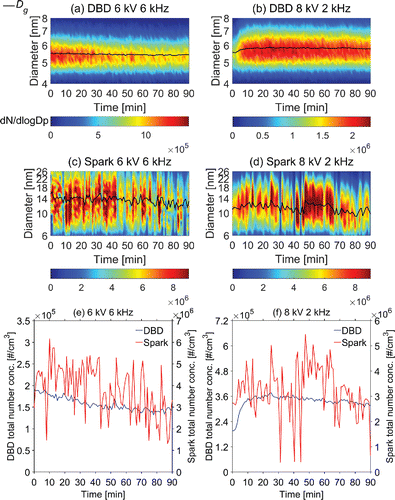Figures & data
Figure 2. Typical instantaneous current and voltage of (a) the DBD reactor and (b) the spark generator during discharges under high frequency sinusoidal voltage, and the matched power-voltage curves of (c) the DBD reactor and (d) the spark generator. White noise around baseline is filtered out in power calculation. The average power over a period is 1.34 W and 28.46 W for the DBD and spark reactors, respectively. (The figure shows the working voltages between the electrodes, while the applied voltages from the power source is Vpeak-peak = 6 kV, the applied frequency is f = 10 kHz.)
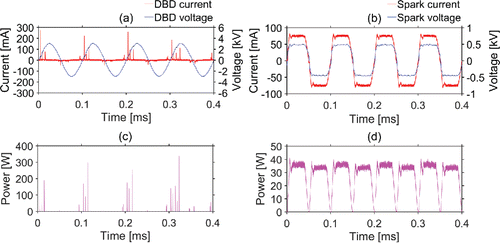
Figure 3. The gas temperatures in the discharge region of the DBD reactor and the spark generator as a function of (a) the applied voltage amplitude (fDBD = 1 kHz, fspark = 10 kHz) and (b) the driving frequency (VDBD = 6 kV, Vspark = 10 kV).
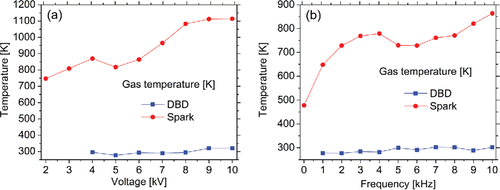
Figure 4. Total number concentrations and geometric mean diameters of nanoparticles generated by the DBD reactor and the spark generator, as a function of (a) the applied voltage amplitude (fDBD = 1 kHz, fspark = 10 kHz) and (b) the driving frequency (VDBD = 6 kV, Vspark = 10 kV).
